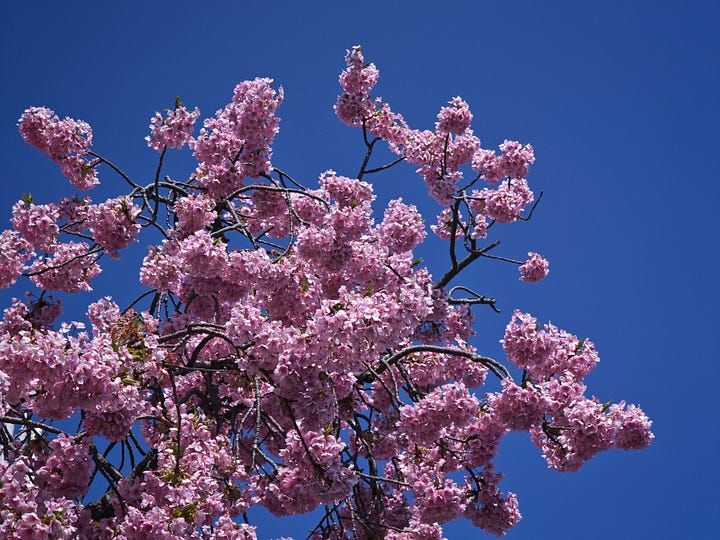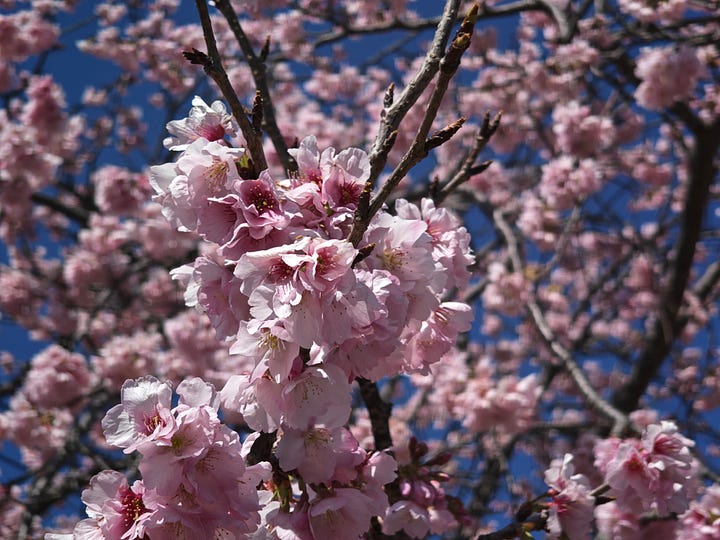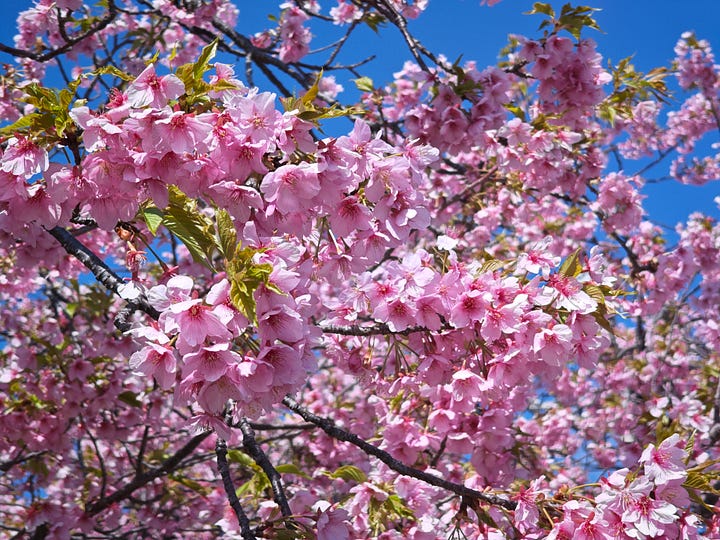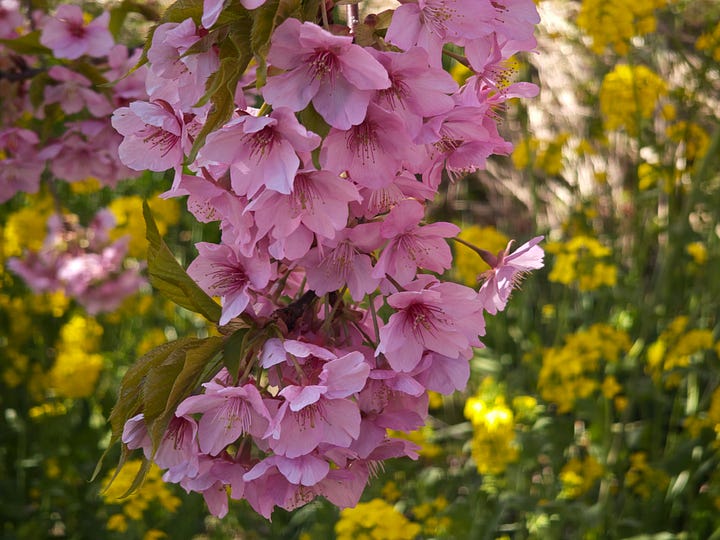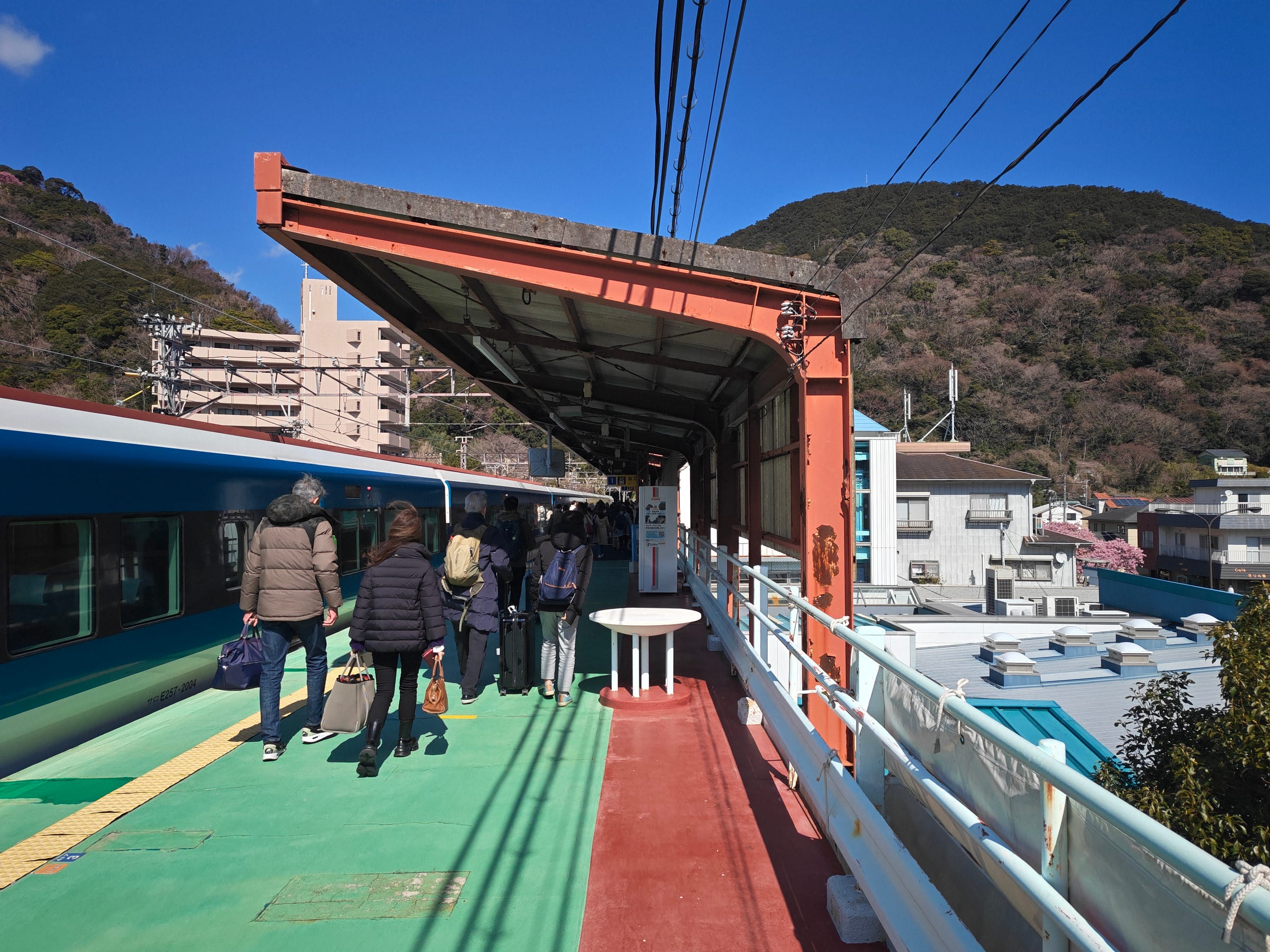The Oppo Find N5 at the Kawazu-zakura Matsuri
Out of Camera #2
Today, on the afternoon of Monday, March 24th, the Japan Meteorological Agency announced that Tokyo’s cherry blossom season had officially kicked off. This is big news every year and requires around-the-clock the monitoring of a single tree at Yasukuni Shrine. The first bloom of 2025 came five days earlier than the previous year.
But I’d already seen a bunch of cherry blossoms in the Tokyo-ish area this season. Kawazu, a town about two and a half hours down the coastline in Shizuoka, is famous for its early-blooming, deep pink variety of blossom known as kawazu-zakura.
Kawazu holds an annual festival called the Kawazu-zakura Matsuri to celebrate the blossoming flowers; this year’s was intended to run from February 1st to March 9th. We went on the final day and there were still a lot of flowers in bloom. As with most things involving cherry blossoms in Japan, the festival is largely an excuse to eat and drink.
My camera for this trip was the Oppo Find N5, a new folding phone that I’ve continued to be very impressed with since its launch last month. The industrial design is fantastic, and Oppo has done a very solid job with the software. But the world’s thinnest book-style folding phone inevitably comes with some compromises, and the Find N5’s camera system actually represents a downgrade over its predecessor, at least in terms of hardware and sensor size.
Here’s what’s on board:
21mm-equivalent lens with 50-megapixel 1/1.56” sensor and f/1.9 aperture
75mm 3x telephoto lens with 50-megapixel 1/2.75” sensor and f/2.7 aperture
15mm ultrawide lens with 8-megapixel 1/4” sensor and f/2.2 aperture
I took almost all of these photos with the Find N5’s Master mode. As always, no edits.





